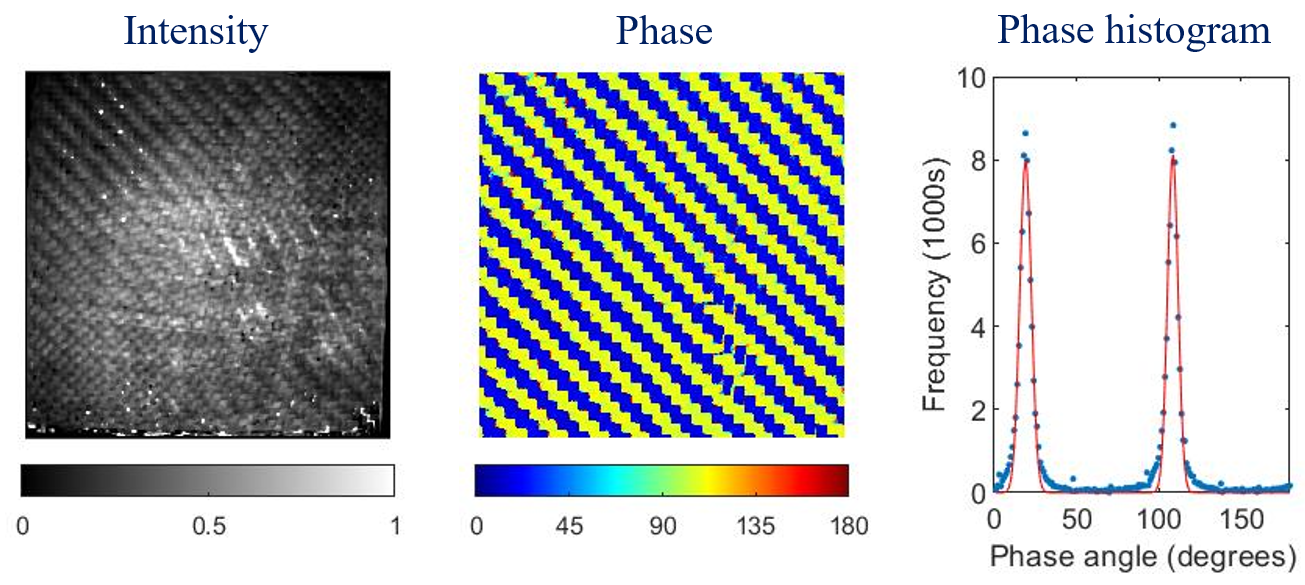
|
Home Publications York Polarisation Photometric stereo Q-Bot Composites Carbon fibre composite part inspectionIn recent, years, I have turned much of my research attention to carbon-fibre reinforced polymer (CFRP) component inspection. This started with a brief collaboration with the Fraunhofer Institute for Integrated Circuits and continued with work for the National Composites Centre. Machine vision has become an invaluable tool for more general component inspection for many years now, with bespoke solutions for 2D and 3D analysis of parts. However, a suitable solution for the case of composites has largely eluded the industry due to the complicated reflectance properties of such surfaces. Recently however, advances in polarisation imaging technology have enabled methods for obtaining detailed maps of fibre tows, allowing for the detection of a multitude of common defects in carbon fibre reinforced polymer parts. Polarisation technology is useful here because the carbon fibres restrict the electric field direction of light reflected from the surface. Essentially, this polarises the light in the direction of the fibres. The image below shows how a map of fibres can be visualised in this way using a polarisation camera to visualise estimated fibre orientations for a woven surface.  The figure, taken from our EUVIP conference paper, also shows how a simple histogram of estimated phase orientations can be used as an efficient quality metric. For this woven part, one would expect the two peaks to be separated by 90 degrees and for the two dense regions of this bimodal distribution to be narrow. Current work is looking at applying machine learning techniques to localise smaller defects.
The figure, taken from our EUVIP conference paper, also shows how a simple histogram of estimated phase orientations can be used as an efficient quality metric. For this woven part, one would expect the two peaks to be separated by 90 degrees and for the two dense regions of this bimodal distribution to be narrow. Current work is looking at applying machine learning techniques to localise smaller defects.
|